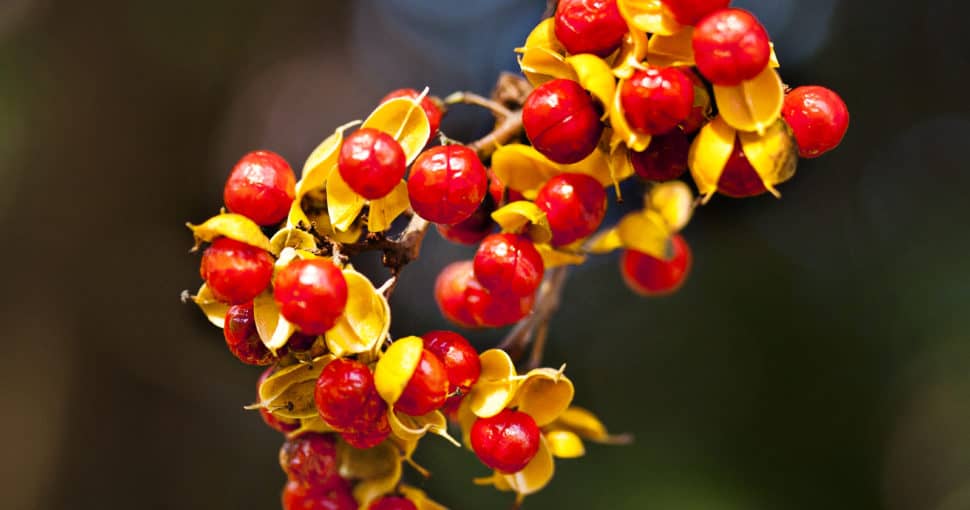You can find several types of poisonous plants in the state of Oklahoma in a variety of natural landscapes. So, if you’re setting up a tent in an Oklahoma campground, walking through a dedicated trail in the woods, or even if you’re simply tending to a garden, you could encounter a poisonous plant.
Contents
- 1. Poison Ivy (Toxicodendron Radicans)
- 2. Poison Oak (Toxicodendron Diversilobum)
- 3. Poison Sumac (Toxicodendron Vernix)
- 4. Angel’s Trumpet (Brugmansia)
- 5. Naked Ladies (Colchicum)
- 6. Bittersweet/Woody Nightshade (Solanum Dulcamara)
- 7. Dumb Canes (Dieffenbachia)
- 8. Four O’clocks/Marvel of Peru (Mirabilis Jalapa)
- 9. Foxgloves (Digitalis)
- 10. Hortensia (Hydrangea)
- 11. Lantana (Lantana Camara)
- 12. Lily of the Valley (Convallaria Majalis)
- 13. Milkweed (Asclepias)
- 14. Mistletoe (Viscum Album)
- 15. Wolf’s Bane/Monkshood (Aconitum)
- 16. Morning Glory (Ipomoea)
- 17. Daffodil (Narcissus)
- 18. Oleander (Nerium Oleander)
- 19. Philodendron (Philodendron)
- 20. Poinsettia (Euphorbia Pulcherrima)
- 21. Castor Bean (Ricinus Communis)
- 22. Meadow Death Camas (Zigadenus Venenosus)
- 23. Henbane (Hyoscyamus Niger)
- 24. Corn Lily (Veratrum Californicum)
These poisonous plants can cause a variety of issues among humans, and the severity of the symptoms can vary depending on a few factors. Some of these factors include the type of plant, whether someone touched it or ate it, and the particular part of the plant, such as the seeds, leaves, stems, etc.
It’s also important to note that these poisonous plants can be toxic to animals as well. So, you should be careful when you take your dog or other pets to nearby wood trails.
The best way to keep yourself, those around you, and your pets safe from these toxic plants is to know about them. As a result, you’ll be able to identify them when you see them and quickly get as far away as possible from them. Also, if in the unfortunate event that your pet does come into contact with a poisonous plant, you can then know what to tell the hospital when you rush it into the emergency room. Therefore, this article highlights and describes 24 poisonous plants in Oklahoma.
1. Poison Ivy (Toxicodendron Radicans)
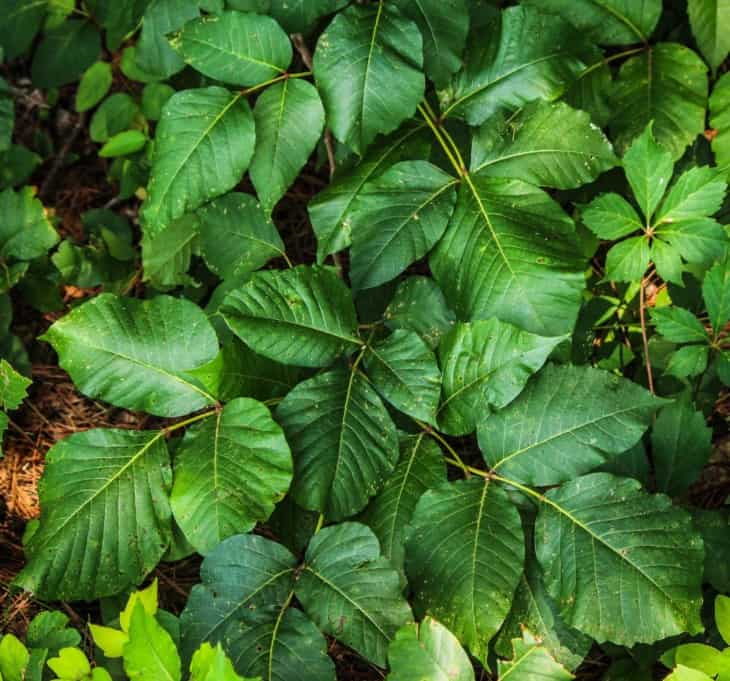
Poison ivy may look like a bush when it grows. The leaves of this plant are smooth and non-lobed. In addition to that, they are serrated at the edges. They are quite similar to poison oak in the sense that physical contact with the plant could lead to severe dermatitis. Therefore, you should avoid getting too close to it. Also, avoid burning it as it may also release toxic gases.
2. Poison Oak (Toxicodendron Diversilobum)
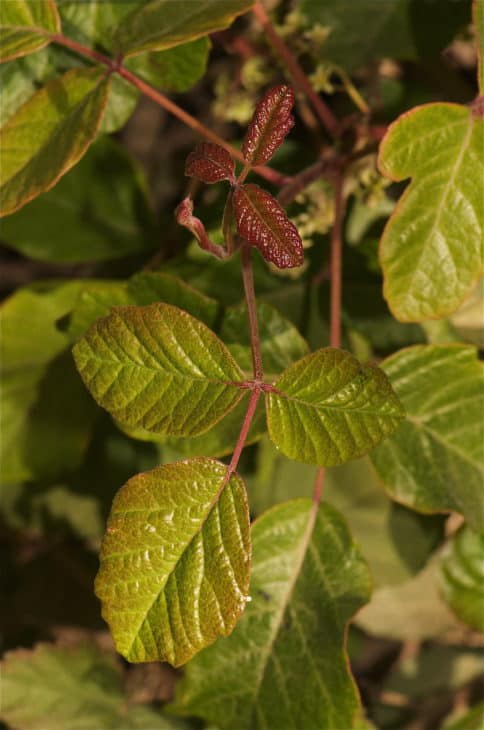
Poison oak can be mixed up with poison ivy, if you don’t look too closely. It also looks like a bush at full growth. However, the leaves are the major difference in its appearance.
Poison oak is known for having waxy berries on it. The colors of the berries also change with time, going yellow or green and to gray or white, respectively. The leaves are lobed and oak-like. In addition to that, the leaves are arranged alternately along the stems.
3. Poison Sumac (Toxicodendron Vernix)
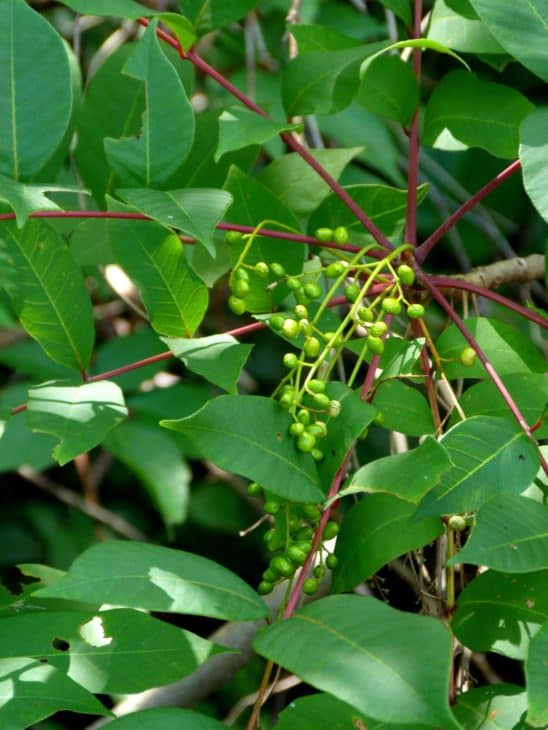
Poison sumac is not as commonly found as poison oak and ivy. It’s only present at Oklahoma’s southeastern border. This plant thrives in wetland areas, and it looks like a small tree. Like the two plants mentioned above, you should not burn poison sumac as the fumes can cause breathing problems and severe skin allergy reactions.
4. Angel’s Trumpet (Brugmansia)
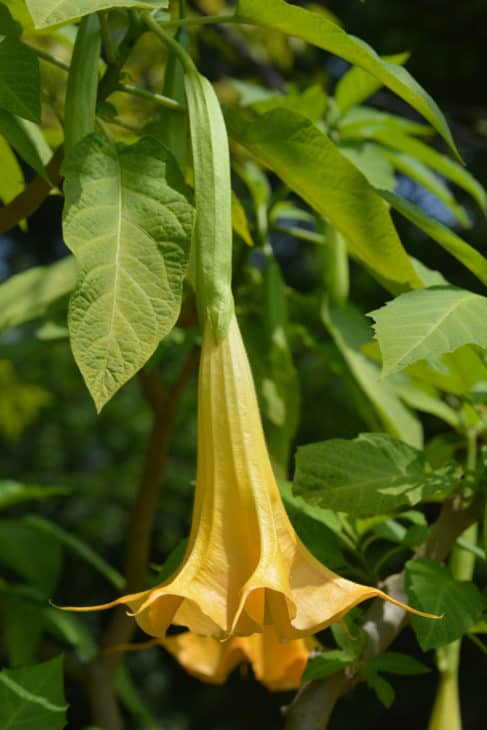
Angel’s Trumpet is part of the nightshade family of shrubs and small trees. This plant is evergreen, with an average height of about 26 feet. The leaves on this plant are toothed, arranged alternatively along the stems of the plant. It also has flowers that are shaped like trumpets, with various colors, including pink, red, orange, white, greenish, yellow, or cream.
5. Naked Ladies (Colchicum)
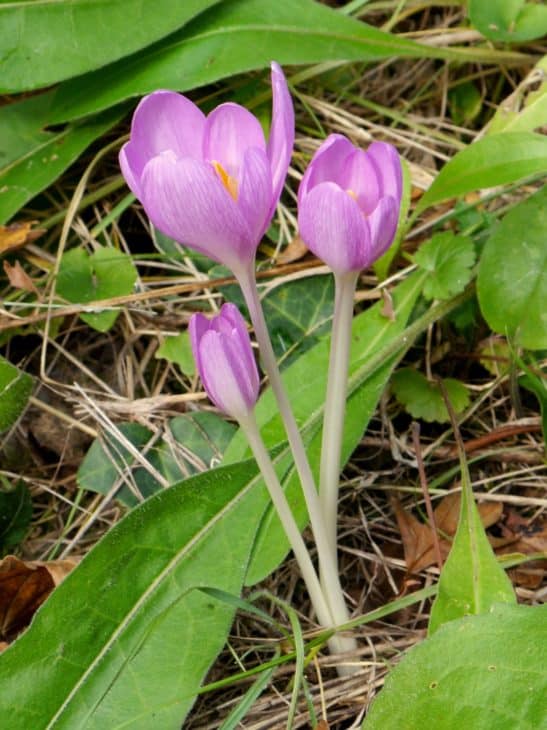
The Naked Ladies plant has long and tubular flowers. The flowers are pink at the ends of the flower, while the base is white. It can be toxic if you come into contact with this plant or ingest it. You could start to experience skin irritation in those cases. It’s also important to note that all parts of this plant are toxic.
6. Bittersweet/Woody Nightshade (Solanum Dulcamara)
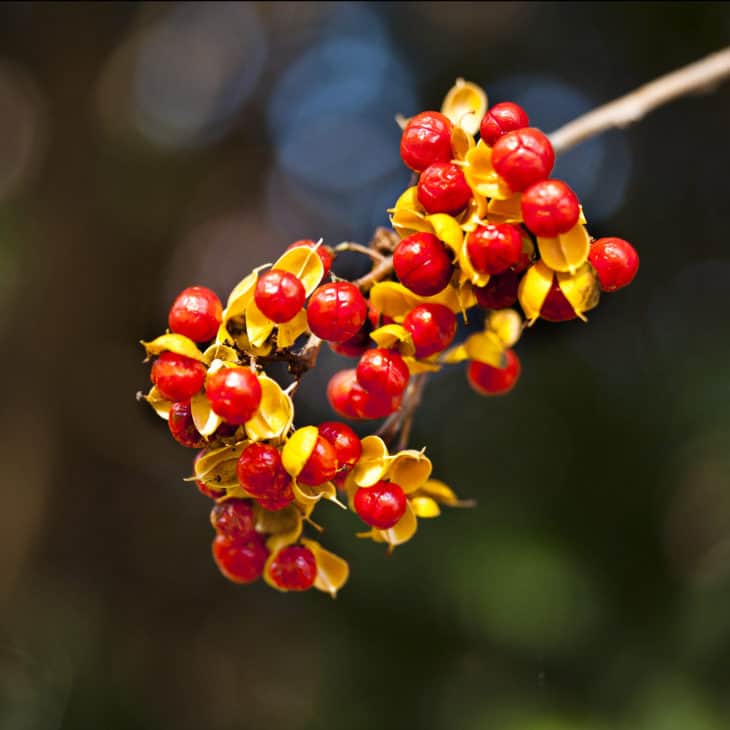
The bittersweet/woody nightshade is an herbaceous vine. The vines can be up to about 14 to 15 feet long. It also has flowers that are shaped like stars, and they are yellow and violet in color. In addition to that, this plant has shiny green berries that eventually turn into a bright red color as they age, but the berries are extremely dangerous.
7. Dumb Canes (Dieffenbachia)
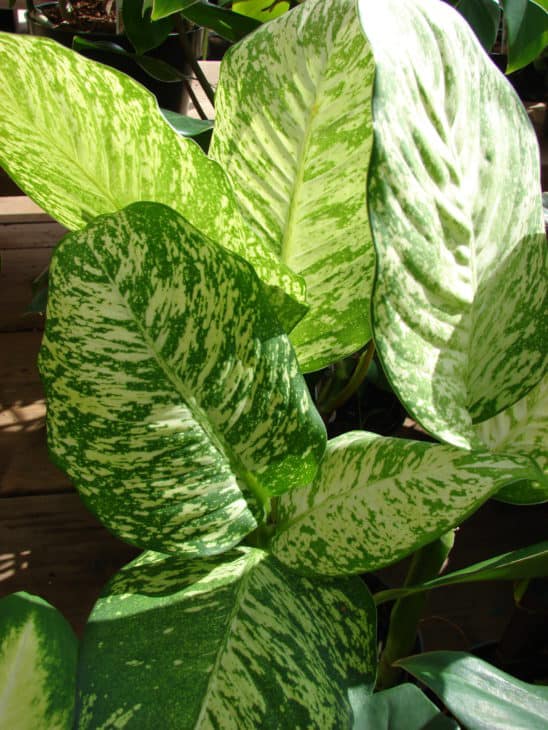
You can identify dumb canes by their bushy and wide leaves. Also, the plant can reach a height of about 6 feet. While some people do keep these plants in their homes, you should know that they can be extremely toxic to dogs and cats. Keep dumb canes away from children, too, as they can numb the vocal cords and throat when ingested.
8. Four O’clocks/Marvel of Peru (Mirabilis Jalapa)
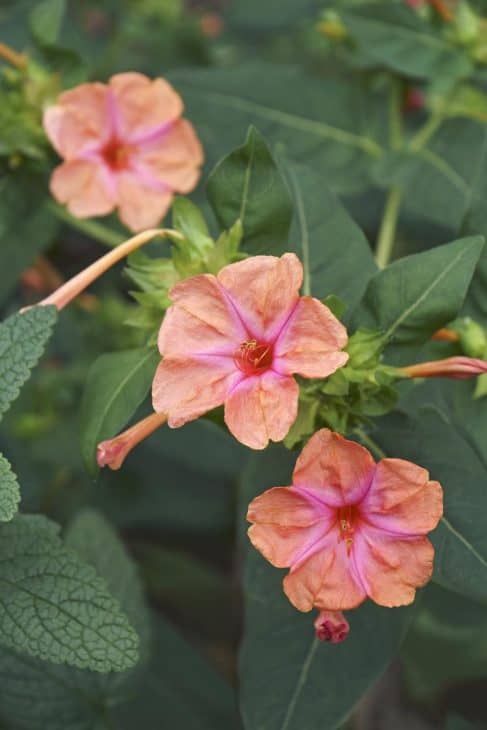
The Mirabilis Jalapa plant goes by different names, four o’clock or the marvel of Peru. This plant is not tall, reaching a height of about a little over three feet. That said, it’s a bushy plant that bears fruit. This plant is used for various purposes, including medical treatments, food coloring, and cosmetics. However, it should be noted that the seeds of the plant are poisonous, so never ingest them.
9. Foxgloves (Digitalis)
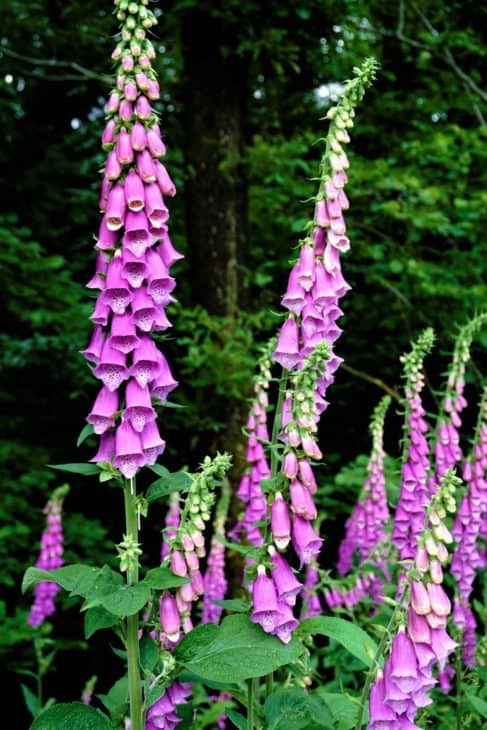
A foxglove plant is identifiable through its drooping, tubular flowers that are about 3 inches long. The plant has flowers that have different colors and spots in every tube. The colors of the flowers are yellow, pink, rose, and white. This plant is toxic to both humans and animals. Do your best to stay away from this plant, as it could lead to headaches, weakness, abdominal pain, nausea, diarrhea, rashes, or blurred vision.
10. Hortensia (Hydrangea)
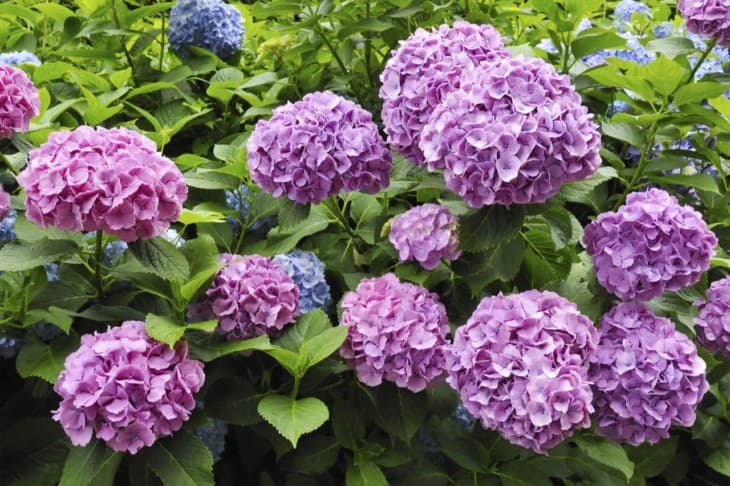
The Hortensia (hydrangea) plant is a shrub that grows about only 4 feet tall. It is known for its flowers that are large and mostly white. Due to their appearance, they are used as ornamental plants. That said, they can be poisonous, especially to pets. They may cause vomiting, nausea, and diarrhea among dogs. This plant can also be poisonous to large animals like horses.
11. Lantana (Lantana Camara)
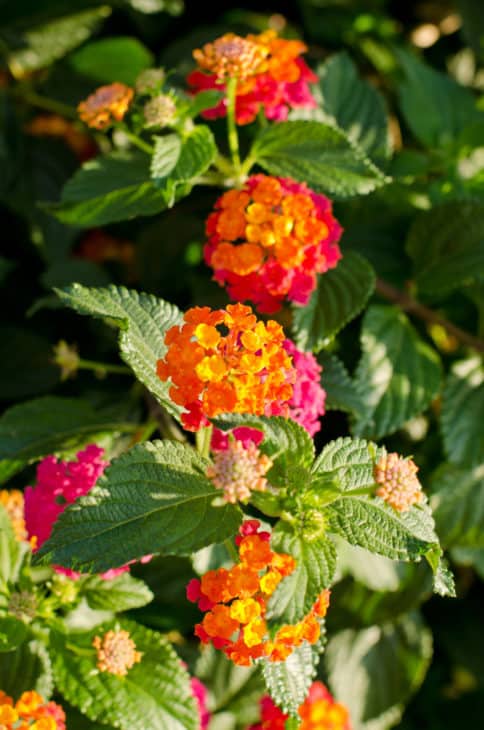
The Lantana (Lantana Camara) is a perennial shrub that grows about 7 feet tall. These plants can have different colored flowers, including white, pink, and red. All of these flowers can be poisonous, so don’t go near them or ingest them. Pets can get an upset stomach if they consume any part of this plant.
12. Lily of the Valley (Convallaria Majalis)
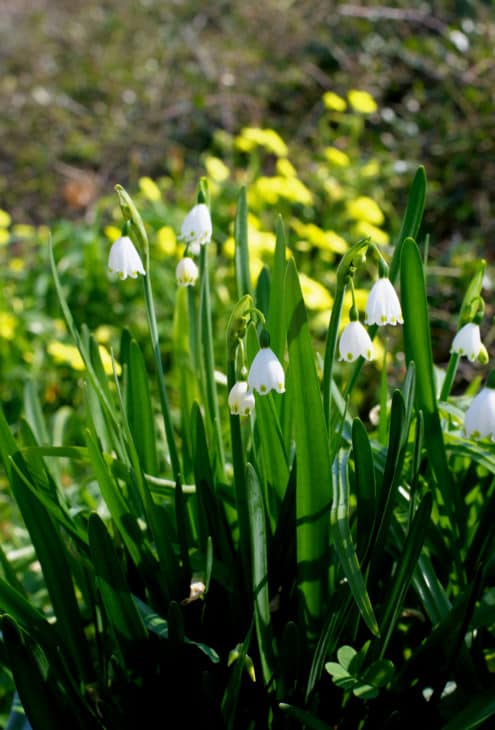
Lily of the valley is a flowering plant. Thus, its flowers are shaped like bells and are white in color. In addition to that, the flowers are known for having a sweet smell. In most cases, this plant is not poisonous if you come into contact with it, but any part of it can be toxic if eaten by people or certain animals.
13. Milkweed (Asclepias)
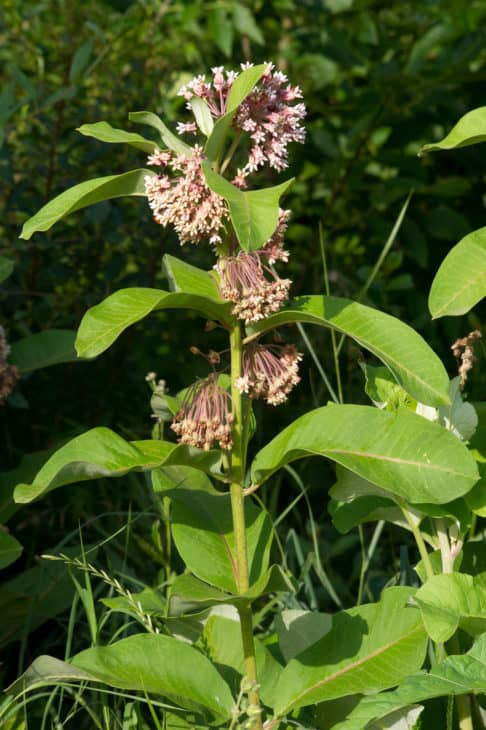
The milkweed (Asclepias) plant, also known as Showy Milkweed, is a perennial plant that’s known for its unique clusters of pinkish-white, sweet-smelling flowers that are shaped like stars. While the stars are an identifying factor, the name of the plant comes from a milky latex that is released when cells on the plant have been damaged. The leaves and other parts above the ground on this plant are poisonous.
14. Mistletoe (Viscum Album)
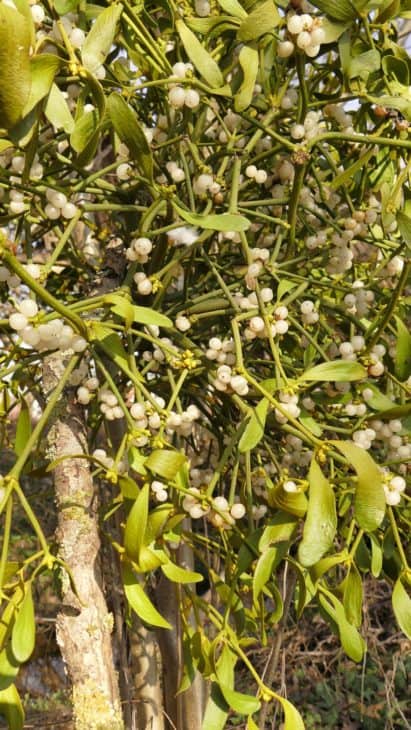
This plant is also known as the European mistletoe. The mistletoe is a bush that grows on different types of trees. The leaves of this plant are leathery and shaped like straps. You should be careful to keep pets and children away from the stems and the leaves and berries on this plant, as they may be toxic.
15. Wolf’s Bane/Monkshood (Aconitum)
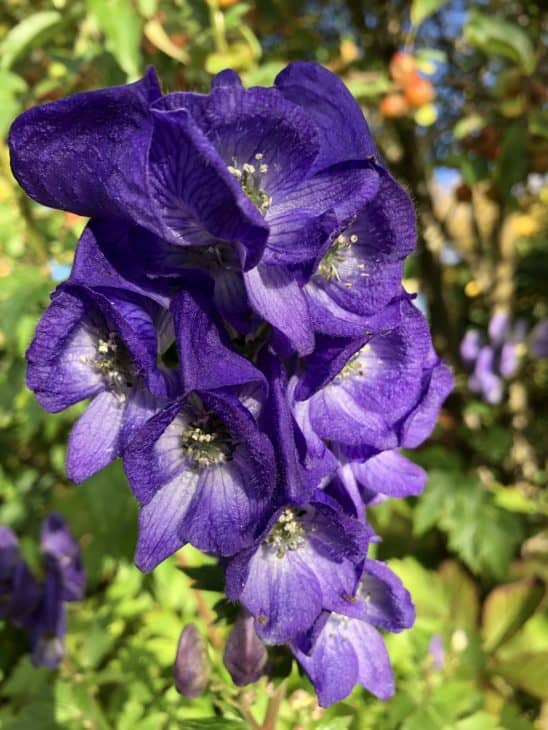
The Aconitum plant goes by many names, with two commons names, wolf’s bane and monkshood. It is a perennial plant that has stems that grow as tall as 2 to 4 feet. In addition to that, it has purple-blue flowers that are situated on the stem in terminal panicles. While the plant is poisonous, it won’t be fatal if you accidentally ingest some of it or brush against it.
16. Morning Glory (Ipomoea)
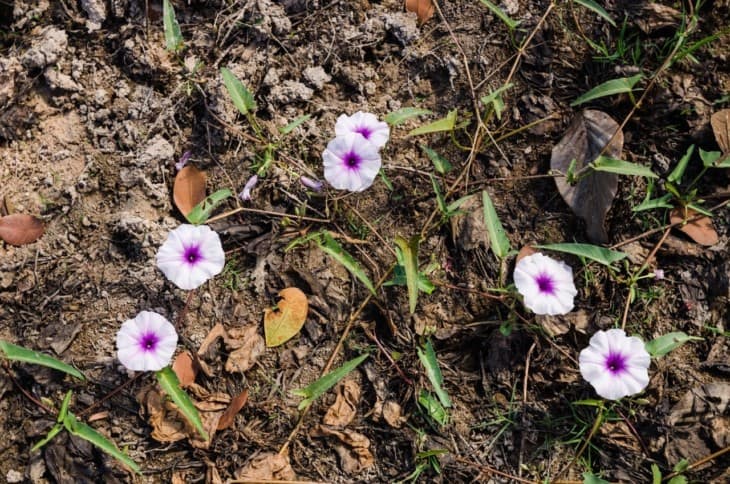
The Ipomoea is a fairly large group of flowering plants, and one of its names is morning glory. There are different varieties of this plant, and they may look slightly different. They can be anywhere between 6 and 12 feet tall. Moreover, they can also have differently-colored flowers, including white, blue, pink, red, purple, and a mix of two colors. Morning glory seeds are poisonous to deer.
17. Daffodil (Narcissus)
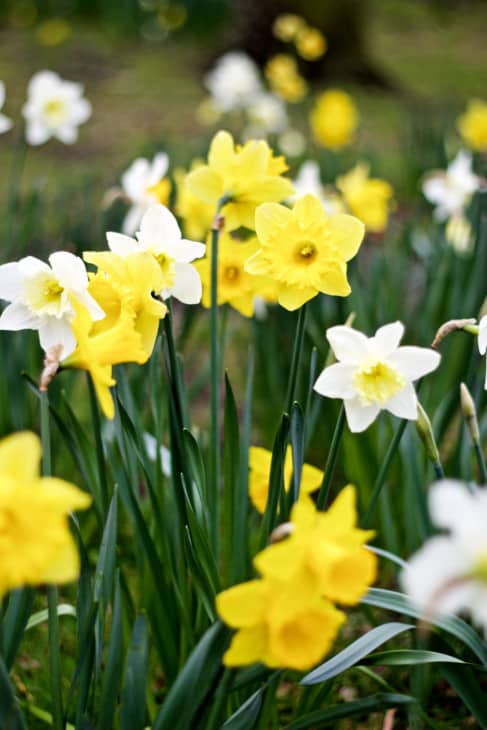
The daffodil (narcissus) is a perennial flowering plant with flowers that have 6 petals that have a corona that’s shaped like a trumpet or a cup. In most cases, the color of the flowers is yellow or white, but they can be pink or orange in some varieties grown in gardens. The bulbs of the Daffodil are extremely poisonous. There have been cases in which people died after mistaking these bulbs for onions.
18. Oleander (Nerium Oleander)
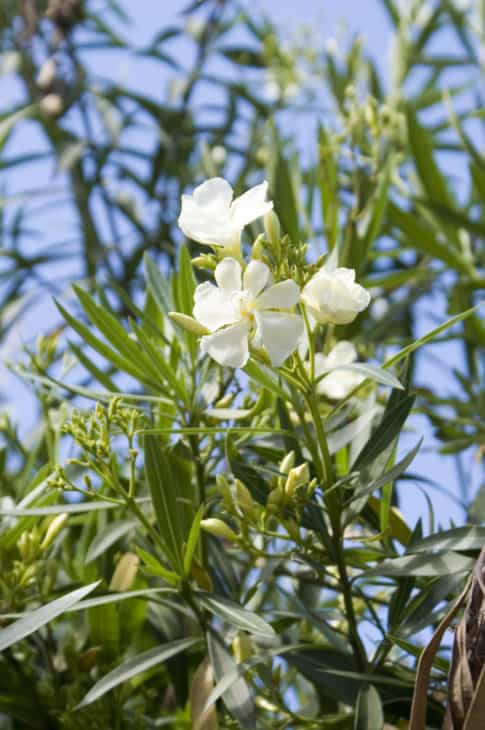
Oleander is a small tree that has dark-green leaves. It can reach a height of 10 feet. This shrub can contain different types of flowers that are white, pink, red, or yellow in color. While the entire plant is very poisonous, you should especially not eat the branches, stems, or leaves, as they are even more toxic than the rest of the plant. Also, the fumes can be toxic when burned.
19. Philodendron (Philodendron)
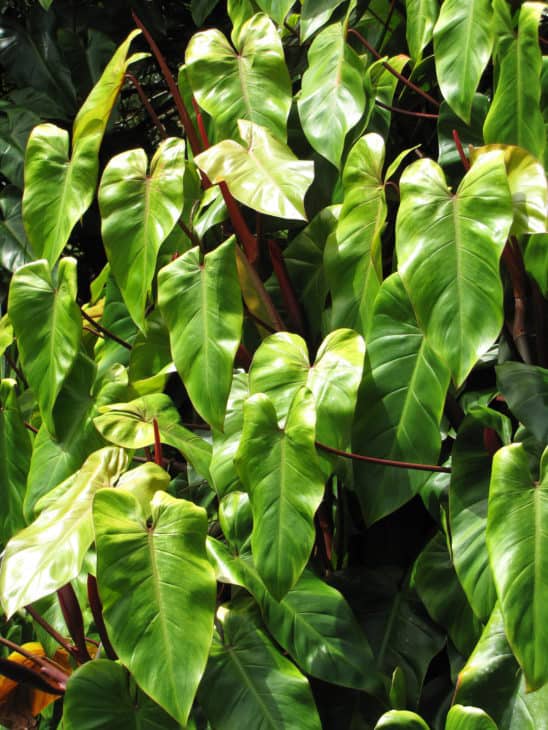
Philodendron (Philodendron) is a large flowering perennial plant. When the plant matures, it can be 20 feet tall and 6 feet wide, but the dimensions vary on the variety. This plant is both toxic to human beings and animals if they are ingested. So, keep your pets and children away from it if you plan to grow it in your garden.
20. Poinsettia (Euphorbia Pulcherrima)
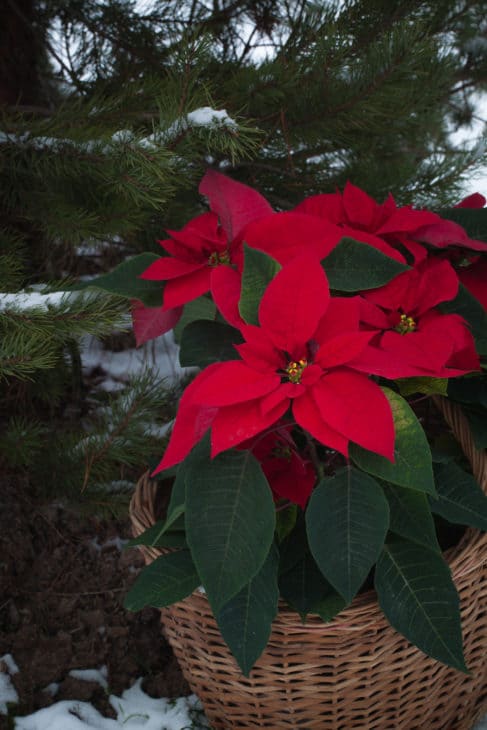
The poinsettia plant is used in floral displays for Christmas as it contains both green and red foliage. The plant has a reputation for being highly toxic, but that may not be the case. In many cases, physical contact or consuming it may not have any negative effects. That said, you should not risk it, as symptoms including diarrhea, vomiting, and nausea may occur.
21. Castor Bean (Ricinus Communis)
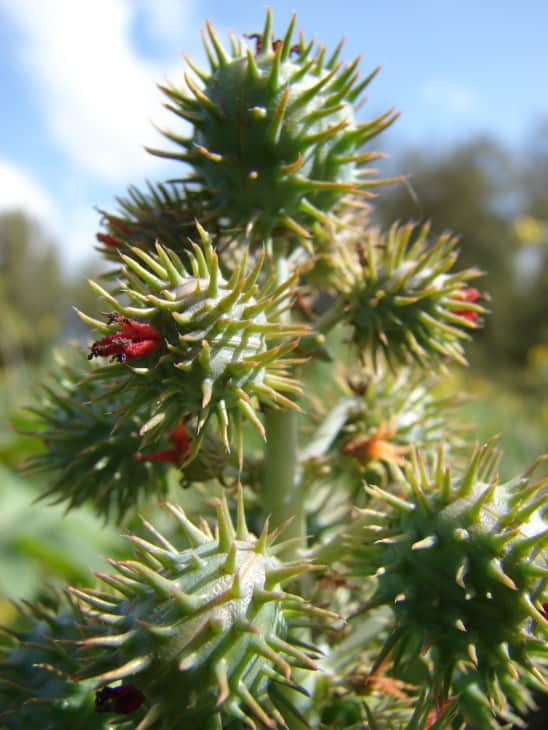
The castor bean plant, which is also known as the castor oil plant, is named after the shape of its fruit, which is similar to that of a bean. These fruits are present at the top of the plant in clusters. Moreover, the leaves on this plant are shaped like stars and are particularly large.
All parts of this plant are toxic to humans and animals. However, the seeds are the most toxic part of it, especially if you ingest them. Ingesting only 2 seeds can kill a healthy human being.
22. Meadow Death Camas (Zigadenus Venenosus)
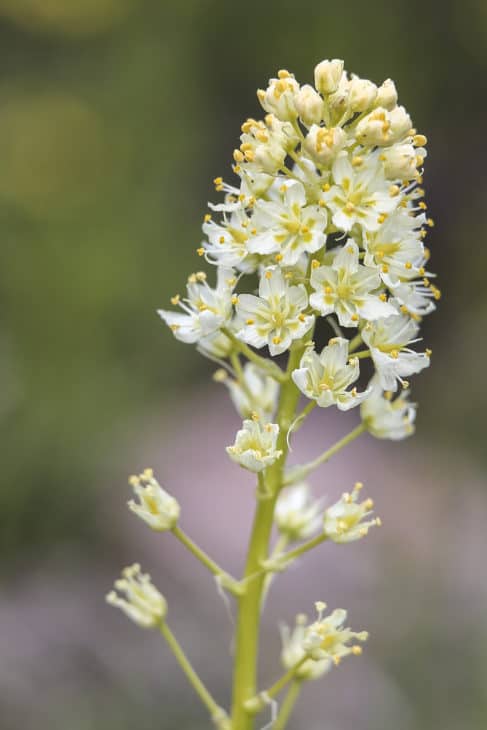
The meadow death camas is a highly poisonous and dangerous plant. It is a perennial plant with showy flowers. These flowers are small and can vary in color, which may include green, cream, or white. This plant is known for being toxic to a variety of animals, including pigs, goats, cattle, and sheep. It has also affected various people.
23. Henbane (Hyoscyamus Niger)
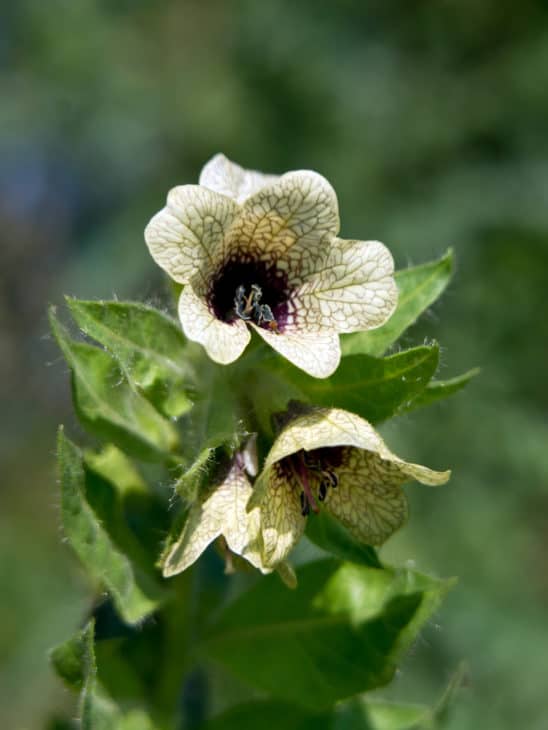
The henbane plant goes by other names, including stinking nightshade and black henbane. It has pale yellow flowers that are shaped like bells. This plant has been known for being toxic and being used for medicinal treatments. It can be toxic to cattle and other farm animals. In addition to that, it’s particularly toxic in large quantities.
24. Corn Lily (Veratrum Californicum)
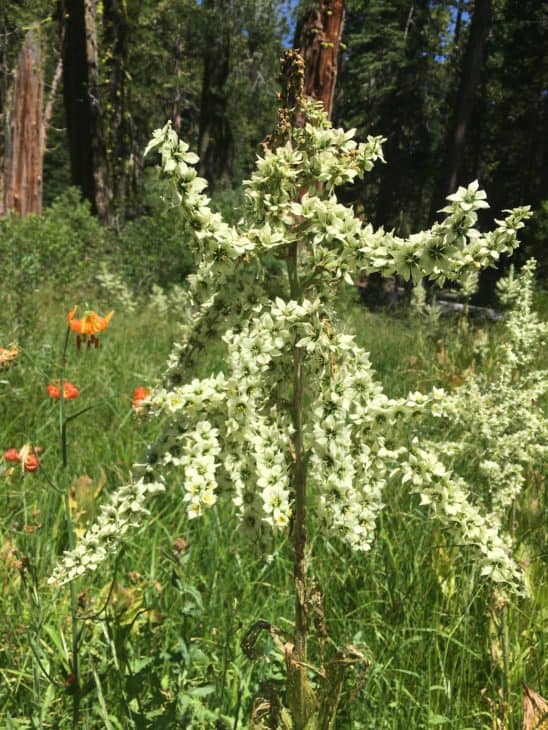
The corn lily plant is extremely poisonous. It has a heavy and leafy stem, and the entire plant is about 4 to 7 feet in height. The small flowers of this plant cluster at the top of the stem. This plant can even be fatal to humans, especially the roots. However, all parts of the plant are toxic to humans and animals alike.

